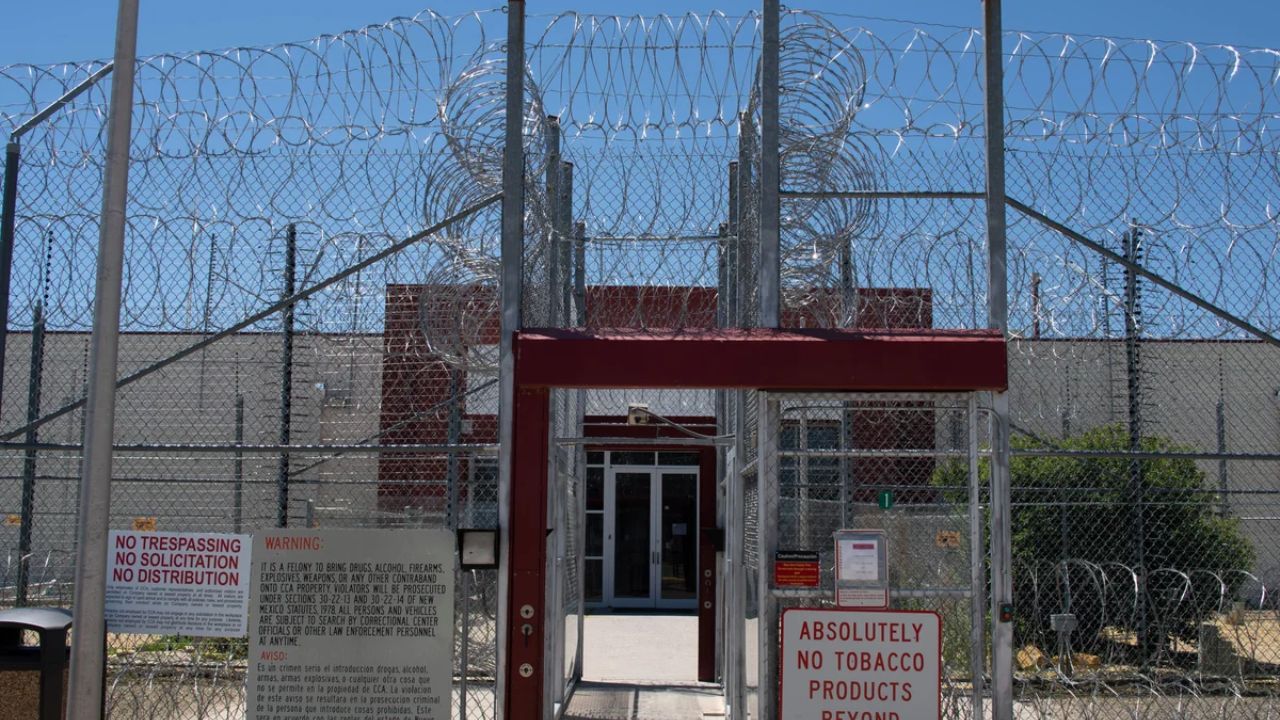James Farrell, a WFAE education reporter, originally published this story in his weekly newsletter.To receive WFAE bulletins delivered directly to your inbox, sign up here.
Unless you are in one of the school districts that have already begun classes without any concern for North Carolina’s scalendar regulations, the first day of courses is rapidly approaching on August 25.
As educators and immigrant advocates continue to keep an eye out for ICE activities at and near schools, which is now possible after the Trump administration lifted guidance that once considered schools protected from enforcement, tensions surrounding immigration enforcement were a defining feature of this past week’s Charlotte-Mecklenburg Schools board meeting. This issue is likely to persist throughout the year. I’ll tell you more about that soon.
As a reminder that CMS is moving to Infinite Campus, the new student information system where you can find grades, schedules, attendance records, and all that fun stuff, parents can also review that board meeting for some helpful tips on how to prepare for the first day of school. CMS officials advise resolving any issues before this week’s open houses start.
In light of all of that, here are a few plot points we will be focusing on as classes begin.
Immigration and Customs Enforcement
According to Tuesday’s discussion, a lot of people in the neighborhood are thinking about immigration as the school year begins. Not only in Charlotte, but school districts nationwide are also facing uncertainty as they get ready for the potential arrival of ICE agents on campus.
One homeowner, Mayra Trinidad, informed the CMS board on Tuesday that children are afraid of returning to school and parents are afraid of dropping their children off at school. This worry is not paranoid, but rather stems from the fact that families are being harassed nationwide.
Since the Trump administration removed rules that forbade ICE from visiting specific sensitive areas, such churches and schools, there has been an increase in anxiety surrounding this matter.
This policy change sparked a lot of local concern, as my colleague Julian Berger wrote earlier this year. Some groups pushed CMS to take additional steps to prepare for the potential arrival of ICE. When a parent was arrested close to the Charlotte East Language Academy in May, this reached a breaking point.
Given the Trump administration’s new policies opening schools to enforcement, many speakers this week cited news that surfaced in July regarding a webinar for CMS principals that stated lobbies and school parking lots were considered public places where ICE would now be able to enter without permission. (That webinar is available here.)
CMS has argued that ICE cannot arbitrarily wait to meet with a student, parent, or staff member in a public setting, stating that this is the same for any member of the public or any law enforcement agency.
Board members emphasized at this week’s meeting that schools should be inclusive and safe for all students, regardless of their immigration status. They have stated that procedures are in place to handle ICE’s presence. ICE cannot simply set up shop on a school campus, according to board member Dee Rankin, who also stated that ICE officers must depart if they do not have a proper warrant or subpoena.
The district updated its law enforcement policy with a new rule in August. The regulation outlines the exact steps involved in immigration enforcement. That policy is available here.It does mention, among other things, that principals should tell ICE officers to leave if they do not have a proper subpoena or judicial order, and that if ICE agents resist, they should notify the CMS Police Department.
At this point, it’s evident that we’re in unfamiliar territory. ICE has seen significant changes in its operations, such as showing up at courthouses without informing local authorities, and it hasn’t historically operated at schools, so schools are rushing to develop policies and procedures, and community members have questions and concerns. It is impossible to foresee exactly how ICE’s involvement in schools will develop.
No CMS site has seen any activity by ICE to date. However, all of this indicates that the mere possibility is affecting classrooms and school communities and will probably continue to do so for the duration of the academic year.
Student Assignment?
The school board authorized a slew of modifications to student assignments last fall that would primarily impact magnet schools this year. Board policy mandates a district comprehensive review every four years, and this was a part of that assessment.
There has been much discussion for some time about delving deeper into the student assignments that were assessed by the board in November. But it didn’t come up again after the board requested additional time in December.
Back in May, CMS informed me that the district was analyzing data pertaining to the ten-year forecast and the evaluation of our Choice programs. The district will then use the 2025–2026 school year to report its results to the board.
Board member Liz Monterrey-Duvall mentioned in her newsletter last month that Phase II of the Comprehensive Review is scheduled for the 2025–2026 academic year, thus it seems likely that we will see additional magnet programs and an assessment of the current enrollment boundaries.
Literacy and post-pandemic learning
Researchers and educators are still keeping an eye on how children are overcoming the learning loss caused by the coronavirus outbreak. For example, I reported on a recent study last week that revealed pupils have essentially plateaued since the pandemic, making it challenging to return to their pre-pandemic levels.
Given North Carolina’s significant investment in teacher training in the science of reading, I paid close attention to literacy and reading scores during the previous school year. We have witnessed significant gains for younger K–3 kids throughout the state as a result of that investment. However, older pupils in grades 3–8 have made less progress, which is why last year’s end-of-grade tests were especially crucial to observe.
We should see our first glimpse of the kids’ performance around the first week of September.
At the local level, CMS will be monitoring whether the district met the yearly goals that set it up for success. By 2029, the number of K–2 kids who score at benchmark on their DIBELS tests will have increased from 67% to 91%, and by June 2029, the percentage of 3–8 students who score Career and College Ready on their EOG examinations will have increased from 31% to 50%.
School safety and communication
A major subject last year was communication, following a series of events that prompted condemnation from parents.
Parents were outraged by the sudden suspensions of the principals at Randolph Middle School and Ardrey Kell High School, who were not given any prior notice or explanation. In response to a series of threats against the school that were initially made public by the media, Superintendent Crystal Hill released a video apology.
At the most recent school board meeting, CMS officials introduced Let’s Talk, an online tool that enables parents to visit their school’s website, submit questions, concerns, or feedback, and receive a prompt response from the district. However, they did not specifically address any of those topics.
When board member Summer Nunn announced in a July Facebook post that she would not be running for reelection this year, she alluded to the significance of better communication.
Nunn said that there are significant opportunities in the areas of communication within CMS and at the board level. Staying informed, in sync, and actually productive in this profession requires more work than is necessary.
Speaking about who is and is not seeking reelection,
Board elections
This year’s board election has the potential to be significant.
We already know that two incumbents are not running for reelection, and six of the board’s nine seats are up for grabs this year. Thelma Byers-Bailey and Nunn.
In July, I completed an overview of the candidates. Stay tuned for additional coverage in the coming weeks and months. You can read that here.






